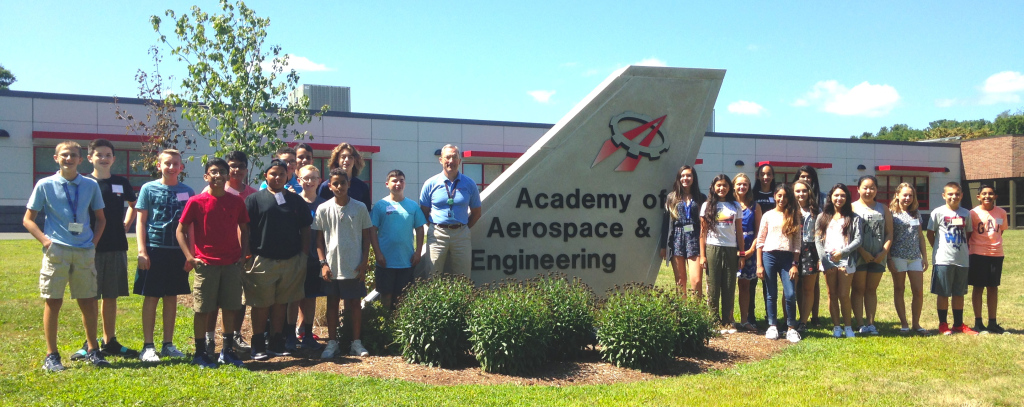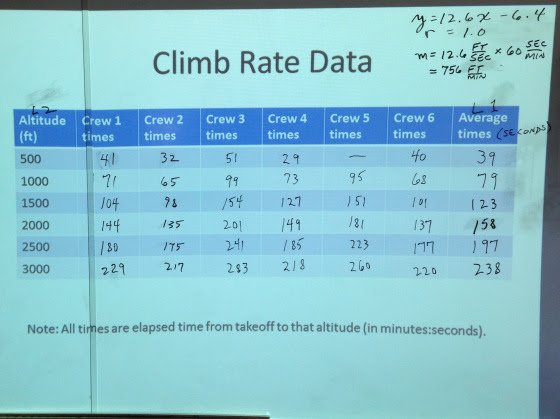Students at the Academy of Aerospace and Engineering benefit from an integrated STEM (science, technology, engineering, math) curriculum everyday, but some days we are able to completely integrate these four disciplines. Today was such a day for the 7th graders. In 7th grade science, they have learned about simple machines, and compared the way an airplane climbs to an inclined plane. In aerospace science, they have learned how to fly an airplane and control it. In algebra they are learning how to find the line of best fit for a set of data points using linear regression, and to judge how well the data is correlated. They also have learned to use TI-84 graphing calculators and STEMPilot Edustation flight simulators, two pieces of learning technology we use weekly. Today’s assignment was for each crew (group of 4 students) to fly a flight simulator as if they were a flight test crew, carefully holding a steady airspeed as they climbed to an altitude of 3000 feet. On the way up, the crew members who were not flying were tasked with timing the climb and noting the elapsed time at every 500 feet of altitude. We got six sets of data from the six crews, then averaged the times to reach each 500-foot increment. Then we discussed how to do the linear regression, and the students computed a linear equation for the line of best fit and calculated the correlation coefficient, which was almost perfect. We discussed how the slope of this line was the climb rate, and we converted into units that pilots use, feet per minute. All this was done in about 40 minutes–an outstanding performance–and every student was involved. Here are photos of the students on the flight simulators and their data table with calculations:




